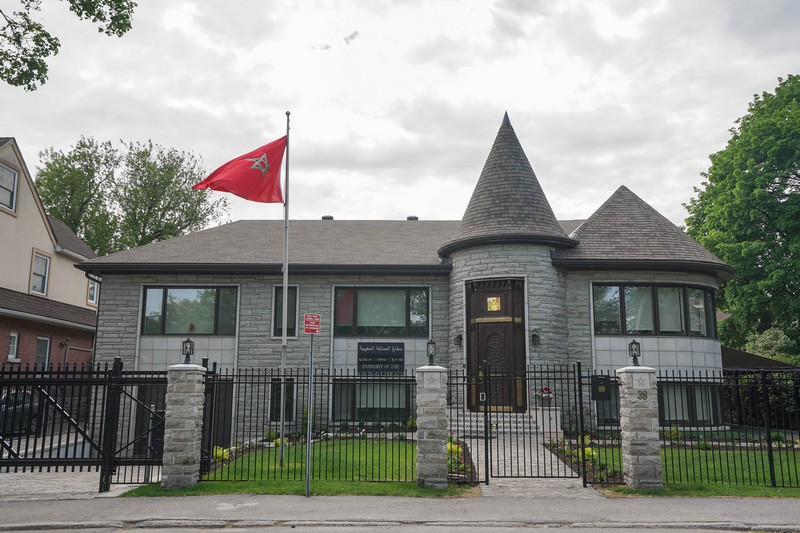A glimpse into Morocco’s architectural heritage, right here
Hilary Duff
Many neighbours have written to IMAGE about the recently-completed renovations at the Embassy of Morocco at 38 Range Rd. I, too, have been admiring the work, reminiscing fondly of my own explorations in the North African country in 2017.

Photo Hilary Duff
Reaching out to Ambassador Souriya Otmani about the renovations, she explained there is a story behind every design element, and that the chancery has been drastically improved in both form and function. That includes one of the most impressive exterior features: a striking wooden door with brass accents.
The renovations were overseen by Services Conseil Atlas, a construction management company. According to SCA, the door was custom built by master carpenters and skillfully sculpted by artisans from the old streets of Fes. The northeast city is known as the cultural centre of Morocco and the door was designed, constructed, and carved there over the course of six months. Its materials—oregano pine wood and cedar—were carefully handpicked to withstand the unforgiving Canadian winter.
“Its aesthetically pleasing presence reflects the very essence of the Kingdom of Morocco: a harmonious marriage of modern times and deeply rooted traditions,” describes SCA of the design.

Peering through the gates of the chancery, one may notice the two distinct parts of the door. The upper section is sculpted in Moroccan cedar wood. On each side panel is an open web floral design known as tawriq which enables the morning light to penetrate the east-facing entranceway. The door’s lower section is constructed from a large oregano pine slab, the sides of which are also sculpted with the floral tawriq design.
Also notable are the bronze inserts and handles. These features reflect the long tradition of metal use in Islamic architecture and echo the door designs of many medieval mosques and madrasas (an Islamic school or college), including the 12th century Qarawiyyin Mosque in Fes.
“All this history and all these organic materials and forms, binding together, allow this magnificent door to transcend time and frontiers to showcase but a slight glimpse of the architectural wonders unique to Morocco’s rich and long history,” says SCA.

In addition to the door, the zellige beldi mosaic tiles on the front stairway were also imported from Fes, and the mosaic continues throughout the interior of the embassy. Diplomatic offices are modern in their function but each door is opulent and handcrafted and custom built; marble slabs compose the main foyer floor and the ceilings are crafted of wood. “It’s such beautiful, complex pieces that have taken a lot of time because it’s all manual work,” explains SCA. “A part of it is truly a gallery.”
The renovations that started in the summer of 2019 have since been completed, though the Embassy won’t be formally opened until further COVID-19 restrictions are lifted.
Said Ambassador Otmani in an email exchange: “It is with great pride that we contribute to improving the appearance of our beautiful neighbourhood with a state-of-the-art embassy that projects a snapshot of Moroccan culture, embedded in a building of Canadian heritage.”

Photo Hilary Duff

Photo Google Streetview

Photo John Cockburn
